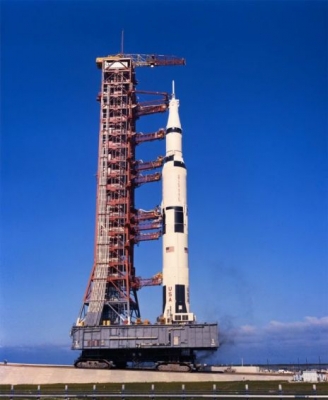
The sizes of rockets range from small fireworks used by ordinary people to massive Saturn Vs that once carried payloads toward the Moon. Newton’s third law of motion explains the propulsion of all rockets, jet engines, deflating balloons, and even the movement of squids and octopuses.
The engines of rockets need to overcome both the pull of gravity and the inertia of the rocket as stated in the first law. According to Newton’s Third Law, “every action has an equal and opposite reaction”. A rocket is pushed forward by the push of the burning fuel at its front. This also creates an equal and opposite push on the exhaust gas backwards.
Once they’re in motion, they won’t stop until a force is applied. As per Newton’s second law, as mass of the object increases, the force needed to move it also increases. The larger a rocket, the stronger the force (for instance, more fuel) to make it accelerate. A space shuttle requires around three kilograms of fuel for every kilogram of payload it carries.
Astronauts in space must also keep the laws of motion in mind. During his pioneering orbit of the Earth in 1961, Russian cosmonaut Yuri Gagarin was the first to experience the practical effects. Gagarin put down his pencil while writing his log. In keeping with Newton;s first law, by which the planets move around the Sun, the pencil floated out of reach. He ended up completing the log using a tape recorder. Now astronauts keep their equipment tethered to a surface with Velcro or bungee straps.
Picture Credit : Google

